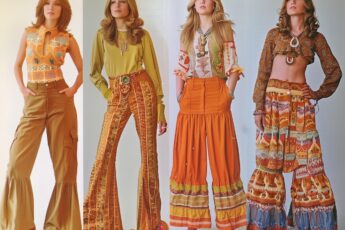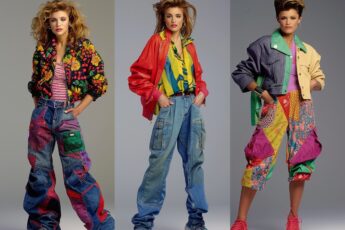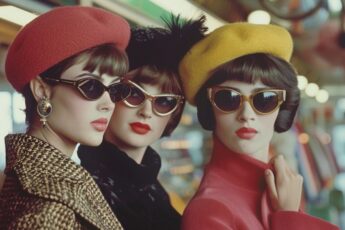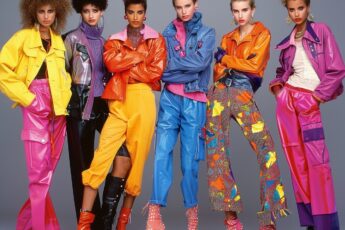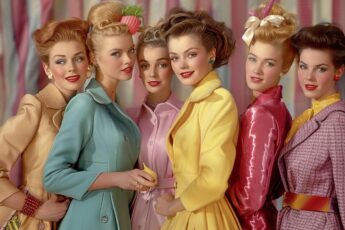The Transformative Era of 1930s Fashion
I have a thing for 1930s fashion. It’s just so… captivating, you know? I mean, talk about a fashion rollercoaster! One minute, you’ve got these carefree flappers doing their thing and the next – bam! – everything’s sophisticated and practical.
It’s wild how much things have changed. Like picture this: the roaring twenties are over, and suddenly, those short, boyish looks are out the window. Instead, you’ve got these longer skirts, nipped-in waists, and curves that are back in style. It wasn’t just about looking different, though. It was like the whole world was shifting, and fashion was right there, changing with it.
I guess that’s what really gets me interested in 30s fashion. It’s not just clothes; it’s a whole story about how people were living and what was going on. Pretty cool, right?
The Great Depression significantly shaped 1930s fashion. As economic hardships hit homes across the globe, people adapted their wardrobes accordingly. Practicality became paramount, and we saw a rise in versatile, durable clothing. Yet, despite these challenges, fashion didn’t lose its flair.
“Style, in a way, is a response to necessity.”
Hollywood glamour provided a much-needed escape from the harsh realities of daily life. The silver screen became a source of inspiration, influencing trends and offering a glimpse into a world of luxury and elegance. Stars like Greta Garbo and Jean Harlow became style icons, their looks eagerly emulated by women everywhere.
I’ve observed that the 1930s were a time of contrasts in fashion. On one hand, we had practical, everyday wear influenced by economic constraints. On the other, we saw the rise of Hollywood-inspired glamour. This juxtaposition created a rich and diverse fashion landscape that continues to inspire designers today.
Key elements of 1930s fashion:
- Longer hemlines
- Fitted waistlines
- Bias-cut dresses
- Wide-legged trousers for women
- Double-breasted suits for men
The 1930s laid the groundwork for many of the fashion trends we see today. It was a decade of innovation, adaptation, and timeless style that continues to captivate fashion enthusiasts like myself.
The Rise of Bias-Cut Gowns
In the 1920s and 1930s, fashion took a dramatic turn with the introduction of bias-cut gowns. I’ve always been fascinated by how this technique revolutionized women’s clothing. Madeleine Vionnet, a true visionary, pioneered this method that changed the way fabric draped on the body.
The bias-cut technique involves cutting fabric at a 45-degree angle to its grain. This creates a stretchy, fluid material that clings to the body’s curves. The result? Slinky, body-hugging silhouettes that were both comfortable and flattering.
“The bias-cut allowed fabric to caress the body rather than constrict it.”
These gowns quickly gained popularity among Hollywood stars and socialites. They loved how the dresses moved with them, creating an elegant, flowing look. Silk and satin became the fabrics of choice for these gowns. Their smooth texture enhanced the bias-cut’s natural drape.
I’ve noticed three key reasons why bias-cut gowns became so popular:
- They offered freedom of movement
- They flattered various body types
- They exuded sophistication and glamour
The bias-cut technique continues to influence fashion today. Many designers still use this method to create stunning, figure-flattering dresses.
Elsa Schiaparelli’s Surrealist Designs
Elsa Schiaparelli brought a whole new dimension to fashion with her surrealist designs. I’ve always admired her ability to blur the lines between art and clothing. Her collaborations with Salvador Dalí produced some of the most iconic pieces in fashion history.
One of Schiaparelli’s most famous creations was the lobster dress. Dalí painted a large lobster on the skirt, creating a garment that was both beautiful and bizarre. This piece perfectly encapsulated Schiaparelli’s unique vision.
Schiaparelli also introduced a color that would become her trademark: shocking pink. This vibrant hue was a bold departure from the more subdued colors of the time. It quickly became associated with her brand and remains popular in fashion today.
Here’s a quick look at some of Schiaparelli’s most influential contributions:
| Innovation | Impact |
|---|---|
| Shocking pink | Introduced a bold new color to fashion |
| Shoulder pads | Created a new silhouette for women’s clothing |
| Surrealist accessories | Merged art and fashion in unexpected ways |
Another trend Schiaparelli popularized was the use of shoulder pads. These created a strong, angular silhouette that contrasted with the softer lines of bias-cut gowns. Shoulder pads became a staple of 1940s fashion and have periodically resurfaced in subsequent decades.
“In difficult times, fashion is always outrageous.”
Schiaparelli’s designs challenged conventional ideas about clothing. She saw fashion as a form of self-expression and art. Her influence continues to inspire designers who push the boundaries of what clothing can be.
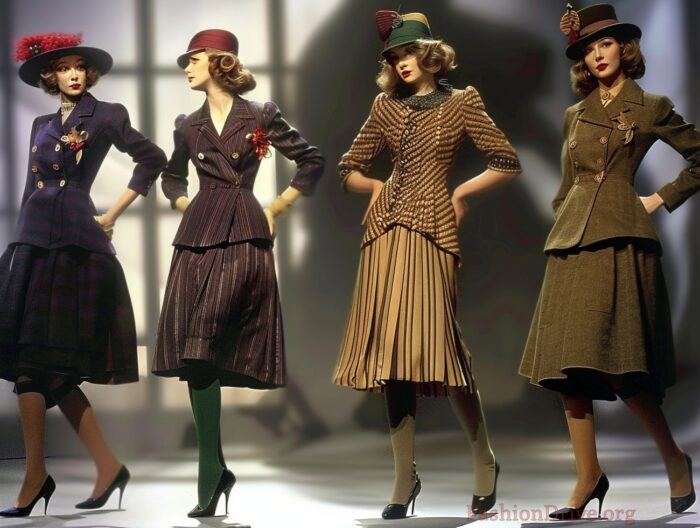
Hollywood’s Influence on 1930s Glamour
Hollywood stars became major fashion influencers in the 1930s. I’ve always been fascinated by how silver screen icons shaped people’s attire during this era.
Jean Harlow, the original “Blonde Bombshell,” popularized the satin slip dress. This sleek, form-fitting garment became a symbol of feminine allure. Women everywhere sought to emulate Harlow’s sultry look, embracing the slinky silhouette for evening wear.
Greta Garbo, known for her enigmatic persona, inspired a more androgynous trend. She introduced wide-legged trousers for women, challenging traditional gender norms in fashion. This bold move paved the way for more relaxed and comfortable clothing options for women.
Men’s fashion wasn’t immune to Hollywood’s sway either. Clark Gable’s appearance in “It Happened One Night” had an unexpected impact. In one scene, Gable removes his shirt to reveal that he isn’t wearing an undershirt. This seemingly small detail led to a significant drop in undershirt sales across America.
“Fashion is not something that exists in dresses only. Fashion is in the sky, in the street, fashion has to do with ideas, the way we live, what is happening.”
Hollywood’s influence extended beyond specific garments. It created an aspirational lifestyle that millions sought to emulate through their clothing choices.
Synthetic Fabrics Revolution
The 1930s and 1940s saw a remarkable transformation in the world of textiles. I’ve witnessed firsthand how synthetic fabrics changed the fashion landscape forever. In 1938, DuPont introduced nylon, a revolutionary material that quickly found its way into stockings, parachutes, and countless other products. Its strength, elasticity, and affordability made it an instant hit.
Around the same time, rayon emerged as a popular alternative to silk. Manufacturers marketed it as “artificial silk,” and it soon became a staple in dresses, blouses, and lingerie. I remember how rayon’s versatility and lower cost compared to natural silk made it accessible to a broader range of consumers.
“Synthetic fabrics democratized fashion, bringing style within reach of the masses.”
Perhaps one of the most exciting developments was the introduction of Lastex. This elastic yarn allowed for the creation of form-fitting, stretchable swimwear. I recall the buzz it created in the fashion industry. Suddenly, bathing suits could hug the body’s curves while providing comfort and ease of movement.
Here’s a quick comparison of these synthetic fabrics:
| Fabric | Key Properties | Common Uses |
|---|---|---|
| Nylon | Strong, elastic, quick-drying | Stockings, sportswear, luggage |
| Rayon | Soft, absorbent, versatile | Dresses, blouses, linings |
| Lastex | Highly elastic, durable | Swimwear, foundation garments |
These innovations didn’t just change what we wore; they transformed how we thought about clothing. Synthetic fabrics opened up new possibilities in design and functionality, setting the stage for the diverse and dynamic fashion world we know today.
European Influences on American Fashion
Even as American fashion came into its own, European influences continued to shape trends and styles across the Atlantic. I’ve observed how Parisian haute couture maintained its status as the pinnacle of fashion. American designers and consumers alike looked to Paris for inspiration, often adapting French styles to suit local tastes and lifestyles.
Italian craftsmanship also influenced American fashion. Italian leather goods, particularly shoes and handbags, gained international recognition for their quality and style. I’ve seen how brands like Gucci and Ferragamo became synonymous with luxury and sophistication in the American market.
British fashion, too, left its imprint on American style. Tweed jackets and knitwear from the UK influenced casual wear, bringing a touch of English countryside chic to American wardrobes. I remember how these items became staples in collegiate fashion, symbolizing a kind of understated elegance.
Here are some key European influences on American fashion:
- Parisian silhouettes and design aesthetics
- Italian leather craftsmanship
- British textiles and tailoring techniques
- European fabric innovations
“American fashion is a melting pot, blending European elegance with our own unique flair.”
This cross-pollination of styles created a rich tapestry in American fashion. We embraced European influences while adapting them to our more casual, practical lifestyle. The result was a uniquely American take on fashion that combined Old World sophistication with New World sensibilities.
I’ve watched as this blend of influences has evolved over time, creating a dynamic and diverse fashion landscape. Today, while American designers stand confidently on the global stage, the dialogue between European and American fashion continues, driving innovation and creativity on both sides of the Atlantic.
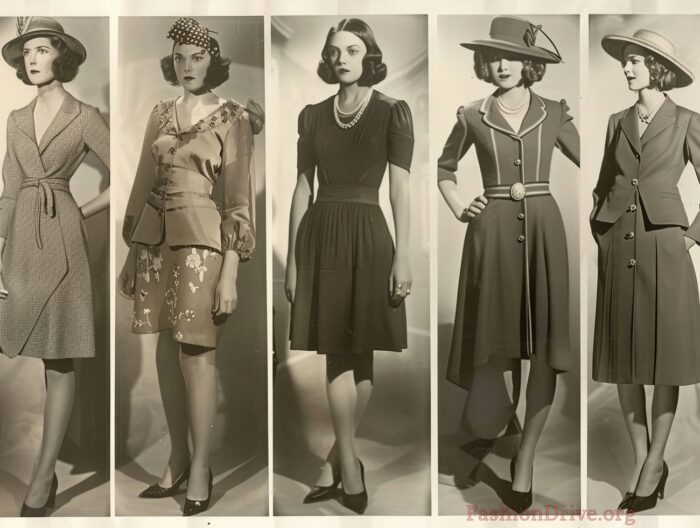
Art Deco Jewelry and Accessories
The Art Deco movement left an indelible mark on jewelry and accessories in the 1920s and 1930s. I’ve always been fascinated by how this style revolutionized fashion with its bold, geometric designs.
Geometric shapes became the hallmark of Art Deco jewelry. Designers embraced clean lines, symmetry, and angular forms. Brooches, necklaces, and earrings featured striking combinations of triangles, rectangles, and circles. This departure from the flowing, organic forms of the Art Nouveau period created a fresh, modern aesthetic.
One of the most exciting innovations of this era was the use of Bakelite plastic in accessories. This versatile material allowed for the creation of colorful, affordable pieces that were accessible to a wider audience. Bakelite bangles, in particular, became immensely popular. They came in a rainbow of hues and could be stacked for a dramatic effect.
“Bakelite brought high fashion to the masses, democratizing style in a way never seen before.”
Despite these new trends, some classic elements endured. Long pearl necklaces remained a staple in many women’s wardrobes. These elegant strands, often reaching below the waist, complemented the straight silhouettes of flapper dresses perfectly.
Here’s a quick overview of popular Art Deco jewelry materials:
- Precious metals (platinum, white gold)
- Colorful gemstones (emeralds, rubies, sapphires)
- Bakelite plastic
- Pearls
- Chrome and other industrial materials
1930s Hairstyles and Makeup Trends
The 1930s ushered in a new era of glamour in beauty and hairstyling. I’ve always admired how women of this period embraced sophisticated looks that continue to inspire today.
Finger waves and pin curls emerged as the defining hairstyles of the decade. These techniques created soft, sculpted waves that framed the face beautifully. Finger waves involved molding wet hair into S-shaped waves using fingers and a comb. Pin curls, on the other hand, were created by rolling small sections of hair and securing them flat against the head with bobby pins.
Eyebrows underwent a dramatic transformation during this time. The thin, arched eyebrow became the beauty standard, replacing the fuller brows of the previous decade. Women often plucked their eyebrows into high, dramatic arches and extended them with pencil for added drama.
Lipstick took center stage in 1930s makeup. Dark lipstick in various shades of red gained immense popularity. From deep crimsons to bright cherry reds, bold lips became a symbol of femininity and confidence.
“A woman’s smile is her best accessory, enhanced by the perfect shade of red.”
Here’s a table summarizing key 1930s beauty trends:
| Feature | Trend |
|---|---|
| Hairstyle | Finger waves, pin curls |
| Eyebrows | Thin, highly arched |
| Lipstick | Dark reds |
| Eye makeup | Subtle, focus on lashes |
| Skin | Pale, powdered finish |
These beauty trends reflected the era’s fascination with Hollywood glamour and helped women express their individuality through their appearance.
Footwear Innovations of the 1930s
The 1930s saw a burst of creativity in shoe design, with several iconic styles emerging that would influence footwear for decades to come. I’ve always been fascinated by the two-tone spectator shoes that gained popularity during this era.
These eye-catching shoes, featuring contrasting colors (often black and white or brown and white), became a staple for both men and women. They added a touch of flair to outfits and symbolized the era’s desire for a bit of glamour amidst tough economic times.
Another significant trend I’ve observed from this period was the rise of platform shoes. These shoes, with their thick soles, gave wearers added height and a bold silhouette. Platforms were particularly popular among women, who embraced the extra inches and the dramatic look they provided.
Perhaps the most revolutionary footwear innovation of the 1930s came from Italian designer Salvatore Ferragamo. He introduced the wedge heel, a game-changer in shoe design. The wedge provided stability and comfort while maintaining a fashionable appearance.
This invention quickly caught on, especially during World War II, when materials were scarce, as wedges could be made from alternative materials like cork.
“Comfort and style are not mutually exclusive. The right shoe can provide both.”
Here’s a quick overview of these 1930s footwear innovations:
| Style | Key Features | Impact |
|---|---|---|
| Two-tone spectators | Contrasting colors, often black/white or brown/white | Added flair to outfits |
| Platform shoes | Thick soles, added height | Created bold silhouettes |
| Wedge heels | Continuous sole from heel to toe | Improved comfort and stability |
These innovations show how 1930s footwear designers balanced style with practicality, creating enduring trends that we still see echoes of today.
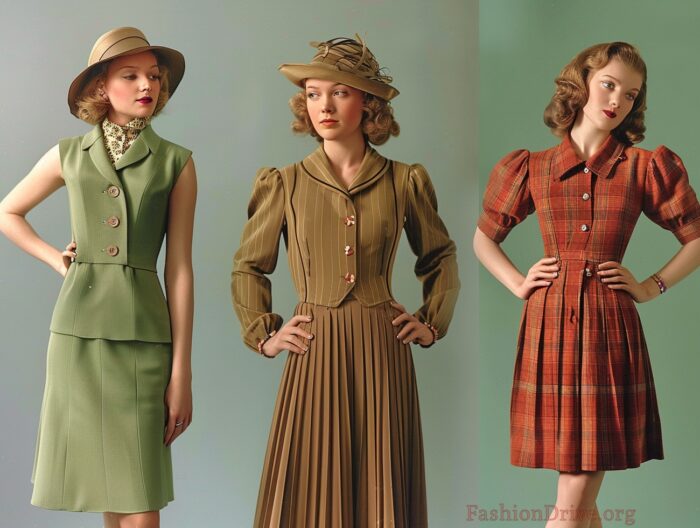
Fashion in 1930s Cinema and Magazines
The 1930s marked a golden age for fashion in cinema and print media. I’ve always been struck by how deeply films and magazines influenced fashion trends during this time.
The epic film Gone with the Wind had a particularly strong impact, sparking a revival of historical costume elements in everyday fashion. Inspired by Scarlett O’Hara’s iconic looks, women began incorporating details like puffed sleeves and corseted waistlines into their wardrobes.
Vogue magazine played a crucial role in disseminating haute couture designs to a wider audience. Its glossy pages showcased the latest creations from Paris and New York, making high fashion more accessible to the average reader.
Vogue’s influence extended beyond simply reporting trends; it actively shaped them, elevating certain designers and styles to must-have status.
In Hollywood, costume designers like Adrian became fashion icons. Their creations for film stars often translated directly into ready-to-wear fashion. Adrian’s designs for Joan Crawford, featuring strong shoulders and nipped waists, became particularly influential. This synergy between cinema and fashion created a powerful engine for trend-setting.
Some key ways cinema and magazines influenced 1930s fashion:
- Popularized specific silhouettes (e.g., strong shoulders, tiny waists)
- Introduced historical elements into contemporary fashion
- Made haute couture more accessible to the general public
- Created instant demand for styles worn by film stars
“Fashion is not something that exists in dresses only. Fashion is in the sky, in the street, fashion has to do with ideas, the way we live, what is happening.”
This quote encapsulates how fashion in the 1930s was more than just clothing – it was a reflection of the era’s dreams, aspirations, and cultural shifts. Cinema and magazines served as powerful mediums for translating these ideas into tangible styles that people could emulate and make their own.
Early Sustainable Fashion Practices
In the 1930s and 1940s, we saw the birth of sustainable fashion practices, though they weren’t called that at the time. Clothing rationing during World War II forced people to get creative with their wardrobes. This necessity sparked ingenious ways to reuse and mend clothes.
Governments launched “Make do and mend” campaigns to encourage sustainability. These initiatives taught people how to extend the life of their garments through clever repairs and alterations. I’ve always been fascinated by this era’s resourcefulness.
“A stitch in time saves nine.”
This old adage became a guiding principle for many. People learned to darn socks, patch trousers, and turn collars to make clothes last longer. It wasn’t just about saving money; it was about making the most of limited resources.
Home sewing surged in popularity during this time. Economic constraints made it a practical choice for many families. Women’s magazines featured patterns and tips for creating stylish outfits on a budget. This DIY approach to fashion fostered a sense of creativity and self-reliance that I find truly inspiring.
1930s Vintage Revival in Modern Fashion
The influence of 1930s fashion continues to ripple through modern design. In recent years, I’ve noticed a significant resurgence of bias-cut dresses in contemporary collections. These flowing, figure-skimming silhouettes harken back to the glamour of Old Hollywood while offering a timeless elegance.
Art Deco jewelry motifs have made a strong comeback in modern accessories. Geometric shapes, bold lines, and symmetrical patterns characteristic of this style now adorn everything from earrings to handbags. I’m particularly drawn to how these elements add a touch of vintage sophistication to current fashion.
Vintage-inspired hairstyles have gained immense popularity. From finger waves to victory rolls, these retro looks are gracing red carpets and street style alike. Here’s a quick guide to some popular 1930s-inspired hairstyles:
- Marcel Waves: Deep, uniform waves created with a hot iron
- Pin Curls: Small, tight curls pinned close to the head
- Finger Waves: S-shaped waves molded with fingers and setting lotion
The revival of these styles showcases the enduring appeal of 1930s glamour. I find it fascinating how fashion continually reinvents itself, drawing inspiration from the past to create something fresh and exciting for the present.
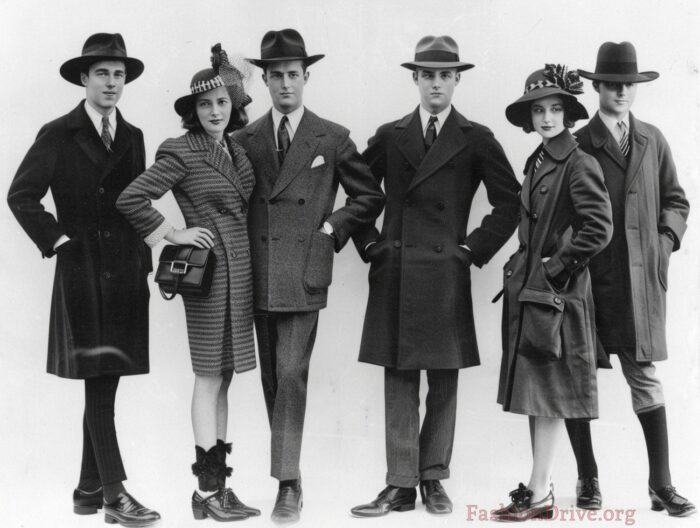
Gender-Fluid Fashion Emergence
I’ve watched with great interest the rise of gender-fluid fashion. This movement challenges traditional notions of how men and women should dress, blurring the lines between masculine and feminine styles.
One of the early pioneers in this realm was Marlene Dietrich. In the 1930s, she popularized women wearing trousers, a bold move that shocked and intrigued society in equal measure. Dietrich’s confident embrace of traditionally masculine attire paved the way for future generations to experiment with gender norms in fashion.
Coco Chanel also played a significant role in this shift. Her designs incorporated more masculine-inspired elements into women’s wear, like tailored jackets and pants. Chanel’s approach wasn’t about mimicking men’s clothing but rather about borrowing elements to create a new, empowering style for women.
As society progressed, we saw the emergence of unisex sportswear in casual settings. This trend reflected changing attitudes towards gender roles and a growing desire for comfort and practicality in everyday clothing.
Here’s a brief timeline of key moments in gender-fluid fashion:
- 1930s: Marlene Dietrich popularizes women in trousers
- 1950s: Coco Chanel introduces masculine-inspired women’s wear
- 1960s-70s: Unisex sportswear gains popularity
- 1980s: Power suits blur gender lines in professional attire
- 2000s onwards: High fashion embraces gender fluidity
The evolution of gender-fluid fashion isn’t just about clothing; it’s a reflection of broader societal changes. It challenges us to rethink our preconceptions about gender and self-expression through fashion.
Style is a way to say who you are without having to speak.
This quote resonates deeply with the essence of gender-fluid fashion. It’s about personal expression and the freedom to choose clothing that feels authentic, regardless of traditional gender norms.
Here’s the Conclusion chapter based on your outline and requirements:
Conclusion
As I reflect on 1930s fashion, I’m struck by the decade’s remarkable contrasts. It was a time of economic hardship, yet also a period of Hollywood glamour. This era’s fashion truly embodied these extremes.
The innovative designs of the 1930s continue to inspire modern fashion. Designers today often draw from the elegant silhouettes and practical adaptations of this period. I’ve noticed how contemporary fashion frequently revisits the bias-cut gowns and tailored suits that defined the era.
Cultural influences played a significant role in shaping the 1930s style. From the impact of Art Deco to the rise of sportswear, fashion became more diverse and expressive. This decade saw a shift towards individual expression in clothing choices, a trend that remains strong today.
Technological advancements also influenced 1930s fashion. New synthetic fabrics and manufacturing techniques allowed for more affordable and versatile clothing options, paving the way for the democratization of fashion in subsequent decades.
The emphasis on practicality in 1930s fashion is particularly noteworthy. Despite economic challenges, people found creative ways to stay stylish:
- Repurposing and altering existing garments
- Embracing versatile, mix-and-match pieces
- Focusing on quality over quantity
Fashion is not something that exists in dresses only. Fashion is in the sky, in the street, fashion has to do with ideas, the way we live, what is happening.
In conclusion, 1930s fashion was a unique blend of elegance, practicality, and individual expression. Its influence on fashion history is undeniable, and its legacy continues to inspire and shape the way we dress today.

